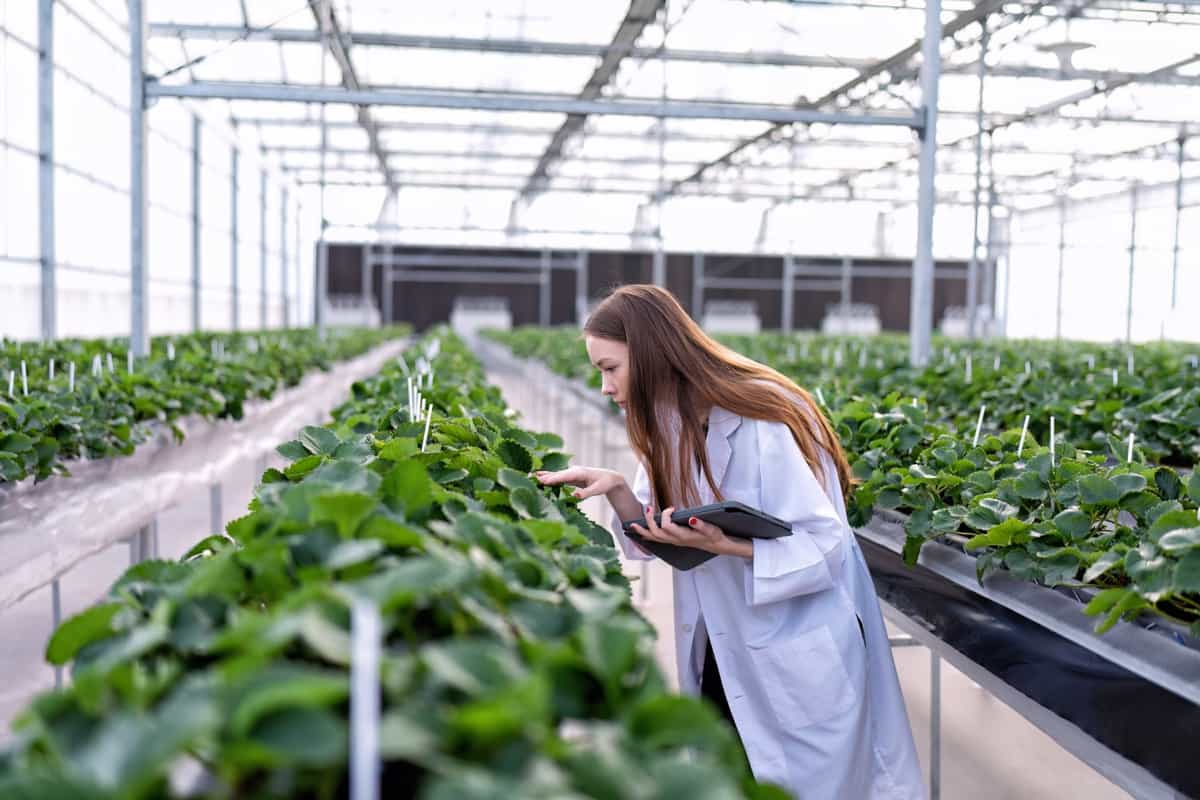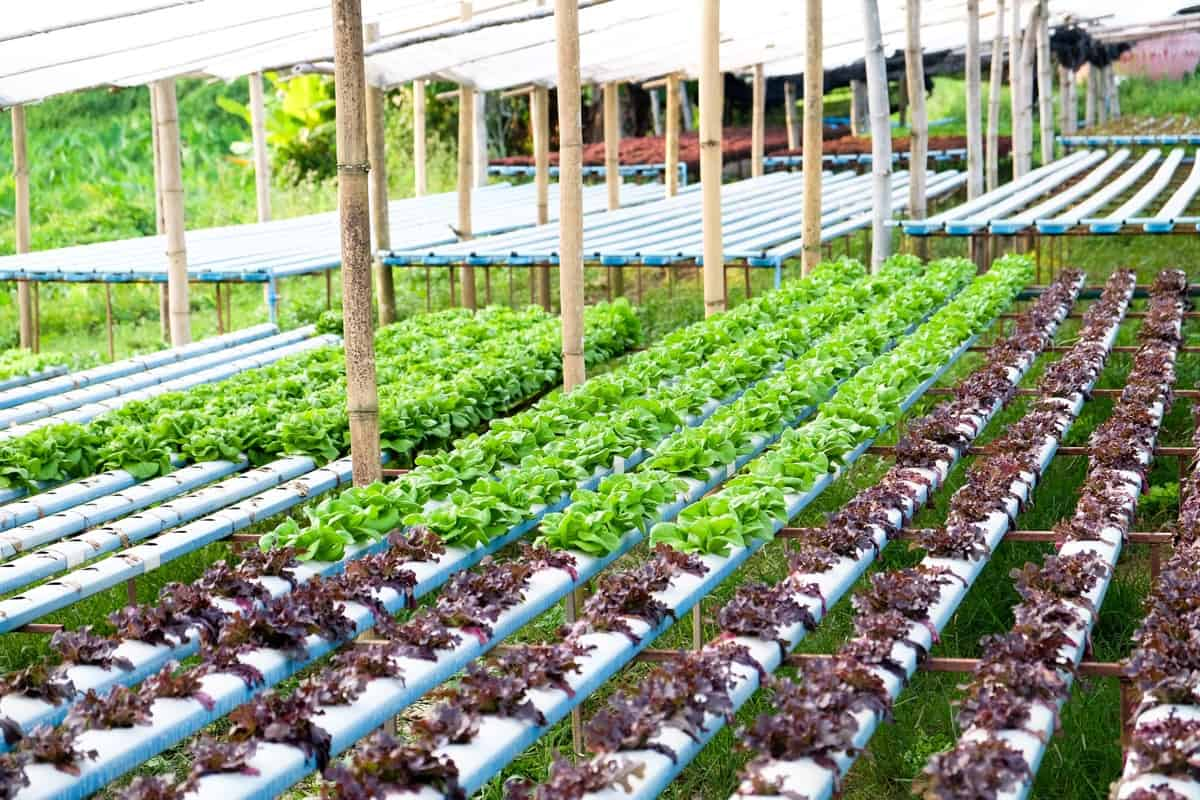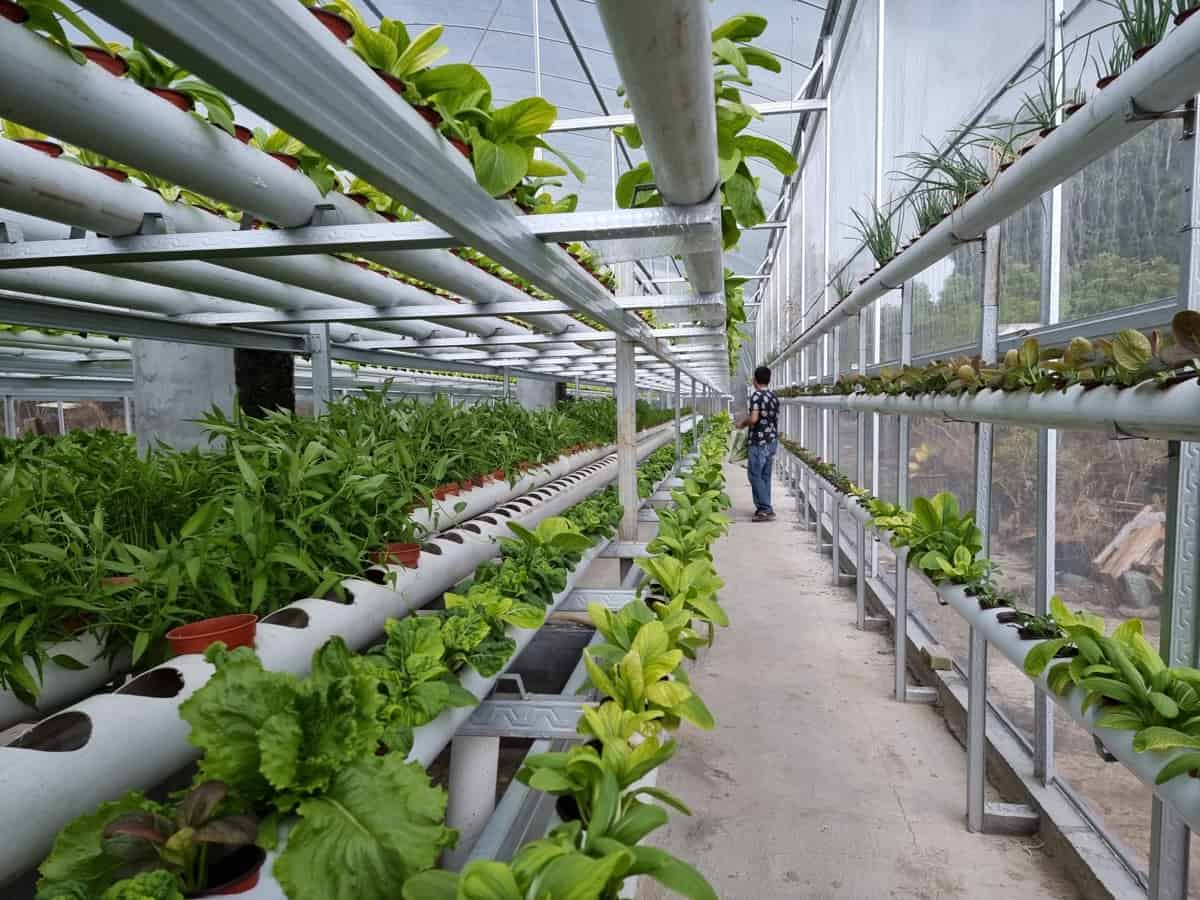Pruning hydroponic plants is a valuable technique that greatly benefits your indoor garden. By understanding how you prune hydroponic plants and the various techniques and methods involved, you can help ensure the health and productivity of your plants. Inspect your hydroponic plants for any signs of overgrowth or disease, and prune accordingly.

Remember that different hydroponic plant species may have specific pruning needs, so do your research and tailor your approach accordingly. Knowing the importance of hydroponic techniques and how and when to prune hydroponic plants is essential for maintaining their health and maximizing their potential yield. With regular attention to pruning techniques tailored specifically for each plant variety in your indoor garden setup, you’ll be well on your way to achieving thriving crops year-round.
How and When to Prune Hydroponic Plants
Pruning Techniques for Hydroponic Plants
Pruning is an essential technique in hydroponics that helps maintain the health and productivity of plants. Several pruning techniques can be used to optimize growth and yield in hydroponic systems. One common method is topping, which involves removing the top portion of the plant to encourage lateral branching.
This allows for more sites where flowers or fruits can develop, resulting in a higher yield. Topping also helps to control plant height and promote bushier growth. Another technique is called pinching, where the tips of new shoots are gently squeezed off between your fingers. This encourages branching and stimulates the plant to produce more foliage, leading to a denser canopy.
Thinning is another useful pruning technique, particularly for leafy greens like Lettuce or Kale. It involves selectively removing some leaves from overcrowded areas, allowing better air circulation and reducing disease risk. In addition to these techniques, it’s important to regularly remove any dead or damaged leaves from your hydroponic plants. These can serve as breeding grounds for pests or diseases if left unattended.
In case you missed it: Hydroponic Tomato Problems: How to Fix, Treatment, and Solutions

Benefits of Pruning in Hydroponics
Pruning is a crucial practice in hydroponics that offers numerous plant benefits. Removing excess foliage can create better airflow and light penetration within the growing area. This results in healthier plants with improved photosynthesis and nutrient absorption capabilities. One of the main advantages of pruning in hydroponics is increased yields.
When you remove unnecessary leaves or branches, the plant can redirect its energy toward producing more fruits or flowers. This leads to larger harvests and higher-quality produce. Moreover, pruning helps maintain plant shape and control growth patterns. By trimming certain plant parts selectively, you can encourage bushier growth or train it to grow vertically instead of horizontally. This maximizes space utilization and promotes even distribution of light throughout the canopy.
Another benefit of pruning is disease prevention. Removing infected or damaged parts promptly minimizes the risk of spreading pathogens to other healthy plants in your hydroponic system. Pruning also improves overall hygiene by reducing areas where pests could hide and thrive. Furthermore, proper pruning techniques aid in managing nutrient uptake efficiently. With fewer leaves competing for nutrients from root uptake solutions, each remaining leaf receives an adequate supply, promoting optimal growth and development.
Pruning Schedules for Different Hydroponic Crops
Leafy greens like Lettuce and Spinach benefit from regular pruning throughout their growing cycle. By removing older leaves that may be blocking sunlight or impeding air circulation, you can encourage new growth and prevent disease. It’s best to prune these crops every 1-2 weeks, focusing on removing any damaged or overcrowded leaves. How to prune hydroponic tomatoes? Fruiting plants like Tomatoes and Peppers have different pruning needs. These plants require careful attention during the early stages of establishing strong root systems.
Once they start producing fruits, removing any suckers or side shoots that divert energy away from fruit development is important. Pruning should be done weekly during this stage. Herbs like Basil or Cilantro can also benefit from occasional trimming to enhance bushier growth and delay flowering. Pinch off the tops of these herbs when they reach a desirable height. Remember, always monitor your plants closely and adjust your pruning schedule accordingly based on their individual needs.
In case you missed it: DIY Hydroponic Farming at Home: A Comprehensive Beginners Guide

Tools Required for Pruning Hydroponic Plants
Having the right tools is essential for pruning hydroponic plants. These tools make the process easier and more efficient and ensure you can achieve the desired results. You must have good pair of pruning shears. These shears have sharp blades that allow precise cuts without damaging the plant. Look for shears with ergonomic handles for added comfort during prolonged use.
In addition to pruning shears, you may also need a small handheld pruner or snips for finer trimming tasks. These tools come in handy when removing smaller branches or leaves from your hydroponic plants. A pruning saw allows you to make clean and smooth cuts without causing unnecessary stress to the plant.
Pruning Tips for Maximizing Hydroponic Yields
Pruning is a crucial aspect of hydroponic gardening that can significantly impact the overall yield of your plants. By removing unnecessary plant material, you not only promote better air circulation and light penetration but also redirect the plant’s energy toward more productive growth. Following a few key tips to maximize hydroponic yields through pruning is important. Start by identifying which parts of your plants need pruning, including diseased or damaged leaves, suckers or side shoots, and overcrowded stems.
Always use clean and sharp tools to minimize damage and prevent the spread of diseases. When deciding what to prune, prioritize removing any weak or unproductive branches while leaving behind healthy ones that will continue to bear fruit. It’s also essential to remove any competing growth near the base of your plants to ensure proper nutrient uptake and prevent pest infestations. Regularly monitor your plants’ growth patterns so you can intervene at the right time for optimal results.
How to Prune Leafy Greens in Hydroponics
Pruning leafy greens in a hydroponic system is key to ensuring healthy growth and maximizing yields. First and foremost, it’s important to start pruning your leafy greens once they have reached a certain size. This typically occurs when they have developed at least 4-6 leaves. Removing the older, lower leaves allows more light and nutrients to reach the younger foliage, promoting stronger growth.
When pruning leafy greens such as Lettuce or Kale, use sharp scissors or pruners to make clean cuts just above the base of the plant. Avoid tearing or damaging any surrounding leaves or stems during this process. As for which specific leaves to prune, focus on removing discolored, damaged, or diseased ones. These unhealthy leaves not only detract from the overall appearance of your plants but can also attract pests or spread diseases if left unchecked.
In case you missed it: Hydroponic Training Courses in India: Online, Offline, Workshop, and Fee

Additionally, thinning out crowded areas by selectively removing excess foliage can improve air circulation around your plants. Remember that each type of leafy green may require slightly different pruning techniques based on its growth habit and structure. So be sure to do some research specific to your chosen crop for optimal results.
When to Prune Fruiting Plants in Hydroponic Systems
Pruning is maintaining the health and productivity of fruiting plants in hydroponic systems. Generally, it is best to start pruning fruiting plants once they have established a strong root system and actively produce flowers or fruits. This typically occurs after the initial vegetative growth stage. It’s generally recommended to prune fruiting plants during their dormant period or just before new growth begins.
Regular pruning throughout the growing season can also help manage plant size and shape, ensuring optimal light penetration and airflow within the hydroponic system. By removing excessive branches or leaves that may block sunlight from reaching lower parts of the plant, you can promote even fruit development and prevent disease.
Pruning Methods for Maintaining Hydroponic Plant Shape
Pruning is important for promoting growth and maximizing yields in hydroponic plants, but it can also be used to maintain the desired shape of your plants. One method for maintaining plant shape is by using topping. This involves cutting off the top portion of the main stem or branches to encourage lateral branching. Another technique is called pinching. This involves gently squeezing or pinching off new shoots or buds at their base to prevent them from growing further.
Pinching helps redirect energy toward existing foliage and encourages fuller growth. Trimming is another useful method for shaping hydroponic plants. It involves removing excess leaves or stems that may obstruct light penetration or air circulation within the system. Trimming allows for better nutrient absorption and reduces the risk of disease. Training techniques such as tying down or bending stems can help control plant shape in a confined space. By gently manipulating the direction of growth, you can ensure that your plants stay compact and tidy.
In case you missed it: Top 10 Herbs to Grow in Hydroponics

Pruning Practices for Preventing Disease in Hydroponics
Disease prevention is crucial when growing plants in a hydroponic system. Pruning plays a key role in keeping your plants healthy and disease-free. Regular pruning helps improve air circulation around the plants. This reduces the chances of fungal diseases taking hold and spreading throughout your hydroponic setup. Removing diseased or infected plant parts promptly can prevent the spread of pathogens. By cutting off infected leaves or stems, you eliminate potential sources of infection that could harm other plants nearby.
By regularly checking and removing affected areas early on, you can prevent further damage and keep your entire crop safe. Sanitizing your pruning tools between each cut is also essential to avoid cross-contamination. Using clean tools ensures you don’t inadvertently transfer pathogens from one plant to another. Remember to always dispose of pruned material properly by burning it or sealing it in a bag before discarding it. This prevents any chance of re-contaminating the environment with disease-causing organisms.
Effects of Pruning on Nutrient Uptake in Hydroponic Plants
Pruning plays a vital role in maximizing nutrient uptake in hydroponic plants. One of the primary benefits of pruning is that it enables better distribution of nutrients throughout the plant. When fewer leaves or branches compete for resources, each remaining part can receive adequate water and essential minerals. This ensures optimal nutrient absorption and utilization by the entire plant system. Furthermore, pruning encourages root growth and increases nutrient absorption capacity.
As we remove excessive top growth, more energy is directed toward root development. Well-developed roots anchor the plants securely and explore more areas for absorbing nutrients from the hydroponic solution. Moreover, strategic pruning practices, such as promptly removing damaged or diseased parts, prevent potential nutrient deficiencies caused by compromised tissue. By eliminating these weak areas early on, maintain a healthy plant system capable of efficiently utilizing available nutrients.
In case you missed it: Top 20 Flowers To Grow In Hydroponics

Conclusion
Pruning hydroponic plants is a crucial practice that can greatly benefit your crops. You can maximize yields, maintain plant shape, prevent disease, and promote nutrient uptake using the right techniques and methods. Remember always to use the appropriate tools for pruning and follow a specific schedule for each crop type. Knowing when to prune is essential in ensuring healthy growth and abundant harvests, whether leafy greens or fruiting plants.
Additionally, don’t forget to consider the individual needs of each plant variety. Some may require more frequent pruning, while others may need less intervention. Observing your plants closely will help you determine their specific requirements. By incorporating proper pruning practices into your hydroponic system, you can create an optimal growing environment that leads to thriving plants and bountiful harvests.
- How to Grow Hibiscus from Flower
- Plantation Ideas for Home Decoration: A Beginners Guide
- Flower Garden Designs and Layouts for Beginners
- Planting and Spacing Techniques in Papaya: A Beginner’s Guide
- Growing Gold: Essential Techniques for Planting Pineapples
- How to Make Kalanchoe Plant Bushy: Home Remedies and Solutions
- 11 Reasons Why Your Gardenia is Not Blooming: Home Remedies and Solutions
- Eco Elegance: The Guide to Designing a Drought-Tolerant Landscape
- Gardening on a Slope: Strategies for Hillside Landscaping
- Nourish and Flourish: Top Organic Mulches for Thriving House Plants
- Everything You Want to Know about Indian Mogra Flower: Discover Uses and Growing
- Green Thumb Success: Expert Tips for Cultivating Greenhouse Pumpkins All Year Round
- Maximize Growth & Flavor: The Ultimate Guide to Companion Planting in Herb Gardens
- How to Control Rhododendron Problems Naturally: Home Remedies and Organic Ways to Fix Them
- Natural Magic: The Remarkable Benefits of Cinnamon for Plants
- Best Steps to Revive Dying Tulip with Natural and Organic Treatment
- 10 Reasons Why Your Angel Trumpet is Not Blooming: Remedies and Treatment
- How to Fix Periwinkle Leaf and Flower-Related Problems: Natural Remedies and Solutions
- How to Fix Zinnias Leaf and Flower Problems: Discover Natural and Home Remedies
- Organic Steps to Induce Lemon Tree Flowers: A Comprehensive Guide
- Bloom Booster: Crafting the Perfect Homemade Bougainvillea Fertilizer
- Optimizing Growth: A Guide to Applying NPK Fertilizer for Potted Plants
- 10 Best Homemade Fertilizers for Rubber Plant: DIY Recipes and Application Method
- How to Boost Female Pumpkin Flowers: Effective Steps for More Flowers and High Yields
- Transform Your Indoor Garden: Top Benefits of Pink Salt for Houseplants
- 10 Best Homemade Fertilizers for Peacock Plants (Calathea): Easy DIY Guide
- Unlock Blooms: 9 Reasons Why Your Potted Chrysanthemum is Not Blooming
- 8 Reasons Why Your Potted Hibiscus is Not Blooming: Fix it with Simple Solutions
- Unlock Blooms: 9 Key Reasons Your Potted Frangipani Won’t Flower
- 10 Reasons Why Is My Ice Plant Not Blooming: Remedies and Treatment
- 10 Reasons Why My Potted Hydrangea Not Blooming: Treatment and Remedies
- 10 Reasons Why is My Wisteria Not Blooming: Remedies and Treatment
- 10 Reasons Why is My Goldfish Plant Not Blooming: Remedies and Treatment
- Maximize Your Space: Ultimate Guide to Balcony Gardening with Grow Bags
- 10 Reasons Why Your Iris is Not Blooming: Remedies and Treatment
- 10 Reasons Why Your Anthurium Plant is Not Blooming: Treatment and Remedies